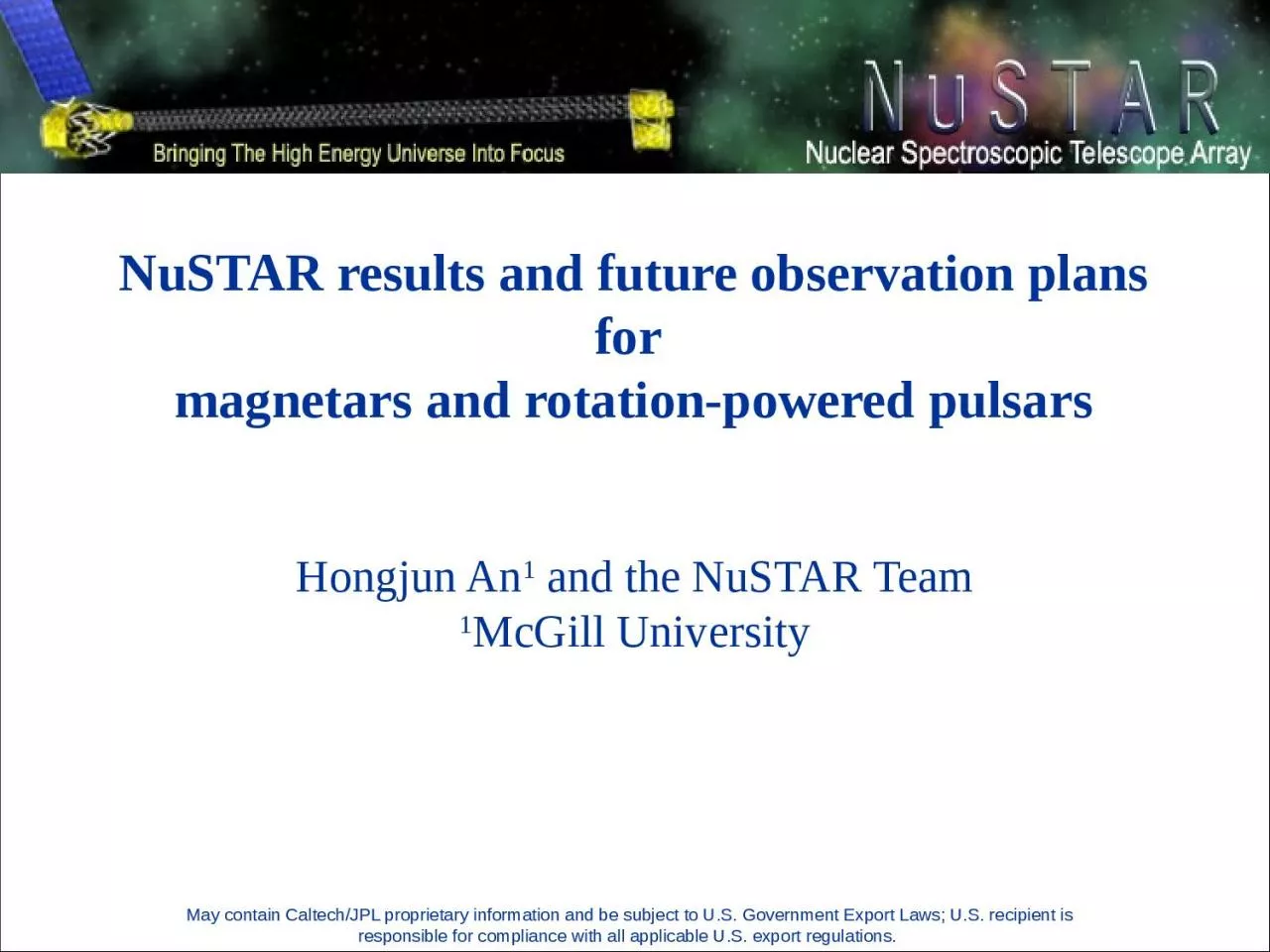PPT-NuSTAR results and future observation plans for
Author : maisie | Published Date : 2024-02-16
magnetars and rotationpowered pulsars Hongjun An 1 and the NuSTAR Team 1 McGill University Launched on 2012 June 13 Focusing in the hard Xray band gt10 keV Two orders
Presentation Embed Code
Download Presentation
Download Presentation The PPT/PDF document "NuSTAR results and future observation pl..." is the property of its rightful owner. Permission is granted to download and print the materials on this website for personal, non-commercial use only, and to display it on your personal computer provided you do not modify the materials and that you retain all copyright notices contained in the materials. By downloading content from our website, you accept the terms of this agreement.
NuSTAR results and future observation plans for: Transcript
Download Rules Of Document
"NuSTAR results and future observation plans for"The content belongs to its owner. You may download and print it for personal use, without modification, and keep all copyright notices. By downloading, you agree to these terms.
Related Documents














